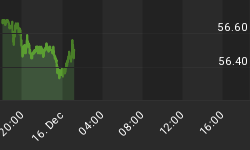The concept of trading for persistency is simple. The rules are this; buy on and up day and sell on a down day. The results of this strategy have blown away buy and hold and were demonstrated in the article: - The Non-Random Walk Theory Persistency. The article also showed that the day to day upward consistency of the market deteriorated around and during the Bear Market; this could be seen in the growth of $1000 equity charts in the above mentioned article. Some people argue that this deterioration was due to program trading, I would argue that is was caused by the Bear Market and the after affects of September 11, 2001. The conclusion is persistency is an exploitable phenomena and while it may have deteriorated for a while it never disappeared in the small cap markets. Note: It is also important to remember day to day persistency is only one of the ingredients CET Capital uses in our over all methodology.
First I will address the issue of "program trading"
After it is all said and done an increase in "program trading" is just another way of saying an increase of volume. When investors talk about volume they are talking about liquidity. One way to measure "program trading" is to look at the Commitment of Traders open interest. As of March 7, 2006 open interest was 695,690 contracts for the S&P 500, 74,882 contracts for the NASDAQ 100 and 34,247 contracts for the Russell 2000. The action is, has been and will be in the S&P 500. The reason why "program traders" or "big money" play the S&P is because of its attractive liquidity. Small cap stocks by their nature are illiquid. The less liquid a market the larger the bid-ask spread. Try liquidating a billion dollar position of small cap stocks. You can do it but it will take awhile and you might not get the price you like. It is the small cap illiquidity issue that deters active trading and it is the lack of active trading or volume which is one ingredient that leads indices to higher persistency. That said as long as the Russell 2000 stays small cap dominated it should remain more persistent then the larger cap indices.
The golden rule of investing is Preservation of Capital
The easiest way to lose money in the markets is to sit on a losing position. Trading for persistency forces you to sell after one down day therefore you do not hold losing positions. The flip side to that coin is you can lose money if you are trading during choppy market conditions. For example, if you buy on an up day and the market closes down the next day forcing you to sell.
Persistency is here to stay
Lastly I want to show you a chart of trading for persistency on the Russell 2000 vs. buy and hold of the S&P 500 from 1998 until February 2006. During this period the Russell 2000 had a 55 percent chance of closing up two days in a row. Trading for persistency during this time produced a compounded annual return of 13.27 percent with a maximum drawdown of 34.53 percent. Buy and hold of the S&P 500 produced a compounded annual return of 3.45 percent with a maximum drawdown of 49.15 percent.

There comes a point in every money mangers life when they have to take what they have been testing and trade it with real money. That point for CET Capital was in the beginning of 2003. So far performance has been good and drawdown has been low. It is also important to remember day to day persistency is only one of the ingredients CET Capital uses in our management programs.
















